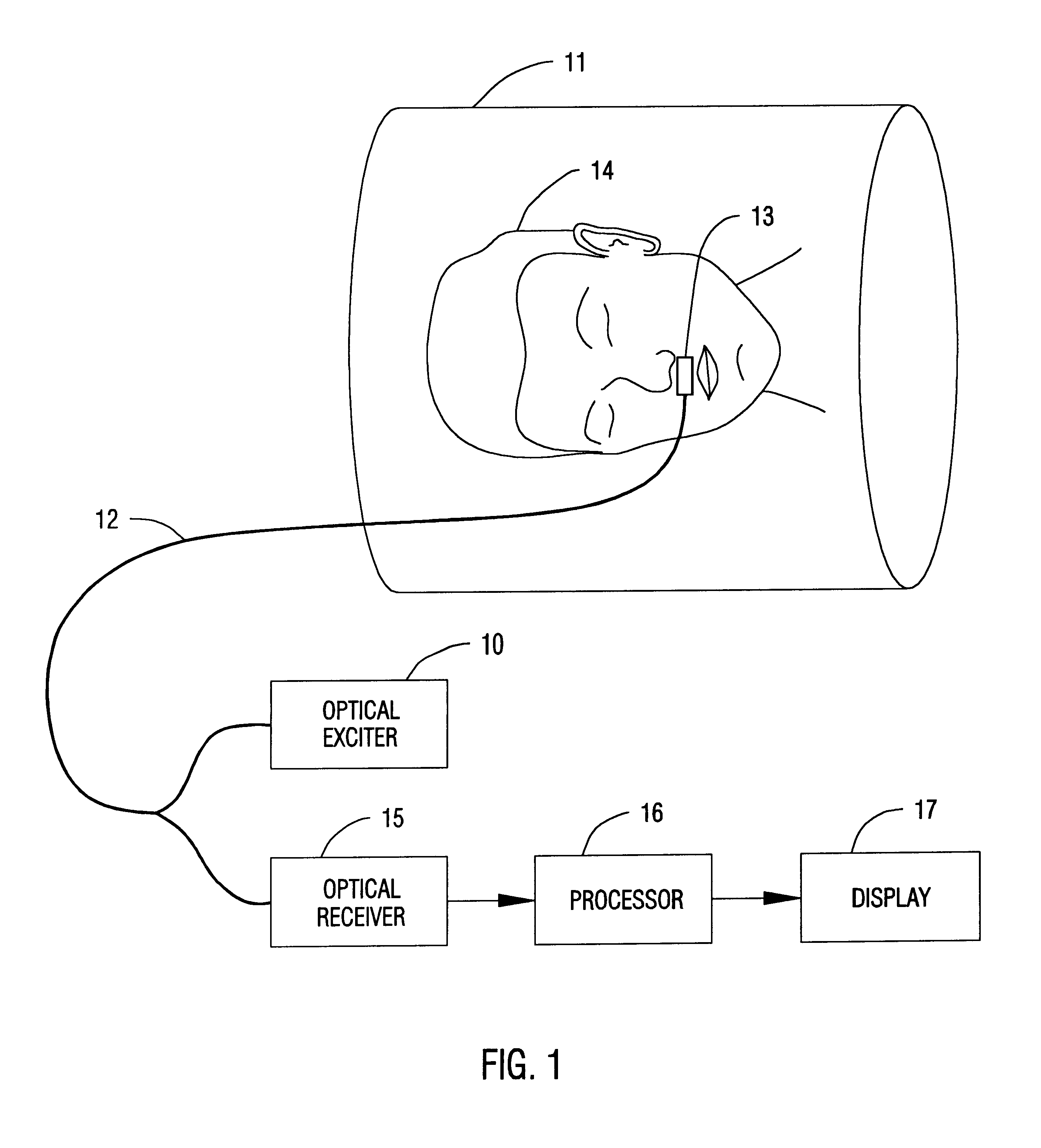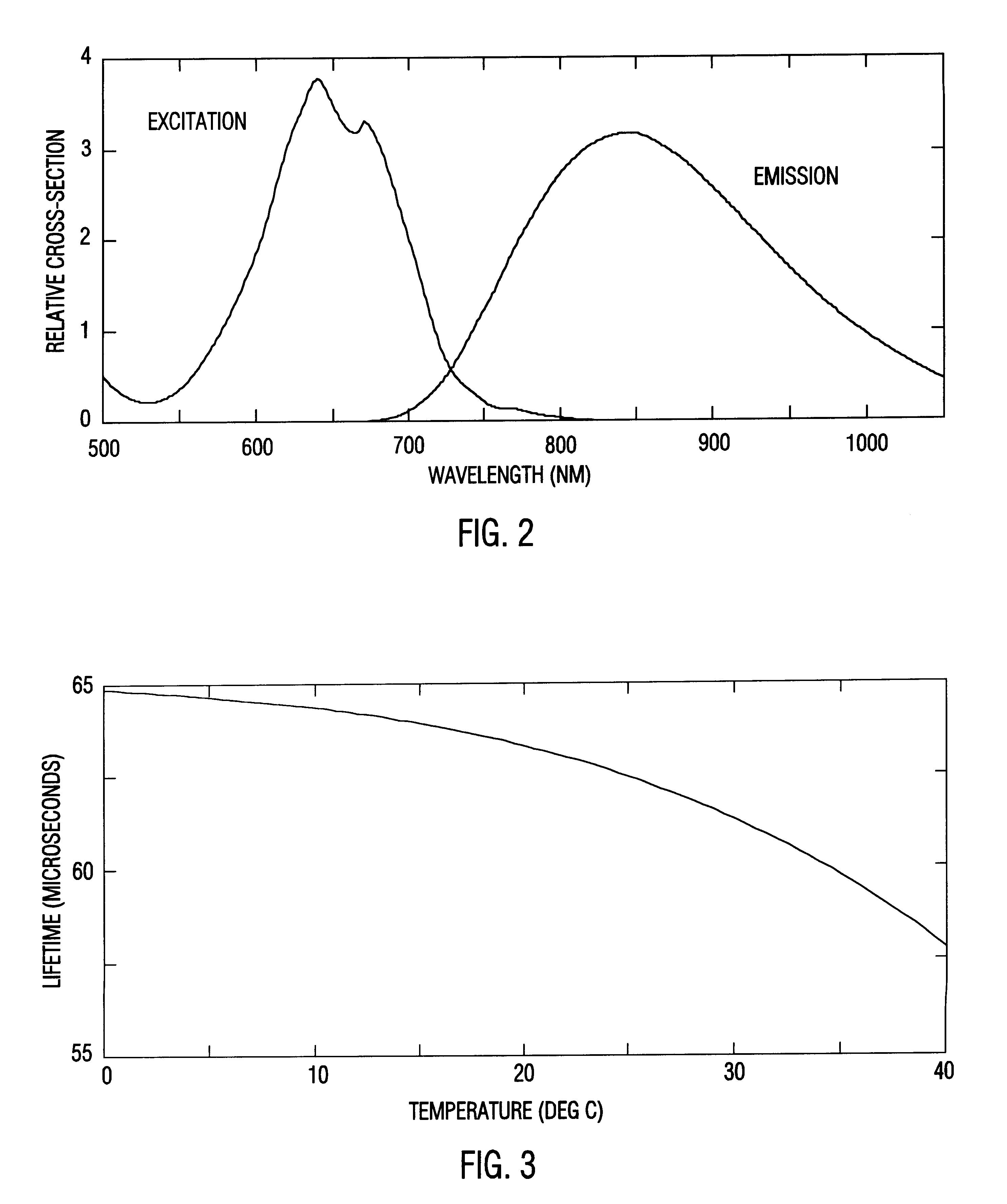Method and apparatus for monitoring the breathing of a patient during magnetic resonance imaging
a magnetic resonance imaging and patient technology, applied in the direction of luminescent dosimeters, optical radiation measurement, instruments, etc., can solve the problems of patients' well-being, patient movement, and patients at risk of untoward complications
- Summary
- Abstract
- Description
- Claims
- Application Information
AI Technical Summary
Problems solved by technology
Method used
Image
Examples
Embodiment Construction
A generalized version of the present invention is illustrated in FIG. 1. An optical exciter 10 located away from an MRI magnet bore 11, sends an excitation light down an optical transmission means 12 consisting of one or more optical fibers, said optical transmission means going into MRI magnet bore 11, and thence to a temperature change sensing tip 13. A patient 14 is located inside MRI magnet bore 11. Temperature change sensing tip 13 is placed in the respiratory airstream of patient 14. Temperature change sensing tip 13 and those parts of optical transmission means 12 within MRI magnet bore 11 comprise materials which are substantially non-conductive and nonmagnetic. Blood pumped from patient 14's heart through the pulmonary artery and thence to the alveoli of the lungs, warms the air in the patient's lungs. As patient 14 breaths, thermal changes are induced in temperature change sensing tip 13 by the patient's expiration of warm air from his or her lungs, and by the patient's in...
PUM
 Login to View More
Login to View More Abstract
Description
Claims
Application Information
 Login to View More
Login to View More - R&D
- Intellectual Property
- Life Sciences
- Materials
- Tech Scout
- Unparalleled Data Quality
- Higher Quality Content
- 60% Fewer Hallucinations
Browse by: Latest US Patents, China's latest patents, Technical Efficacy Thesaurus, Application Domain, Technology Topic, Popular Technical Reports.
© 2025 PatSnap. All rights reserved.Legal|Privacy policy|Modern Slavery Act Transparency Statement|Sitemap|About US| Contact US: help@patsnap.com



